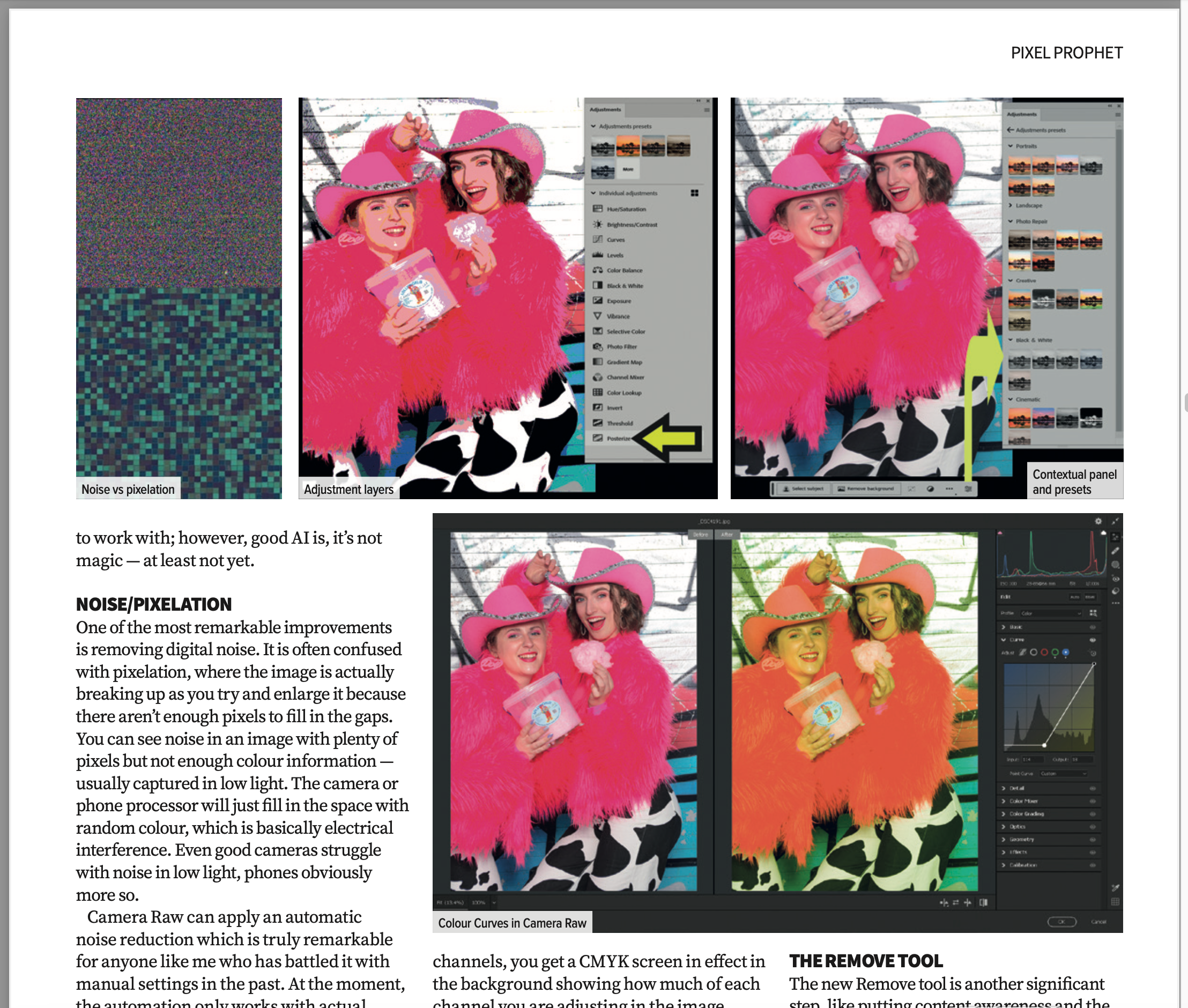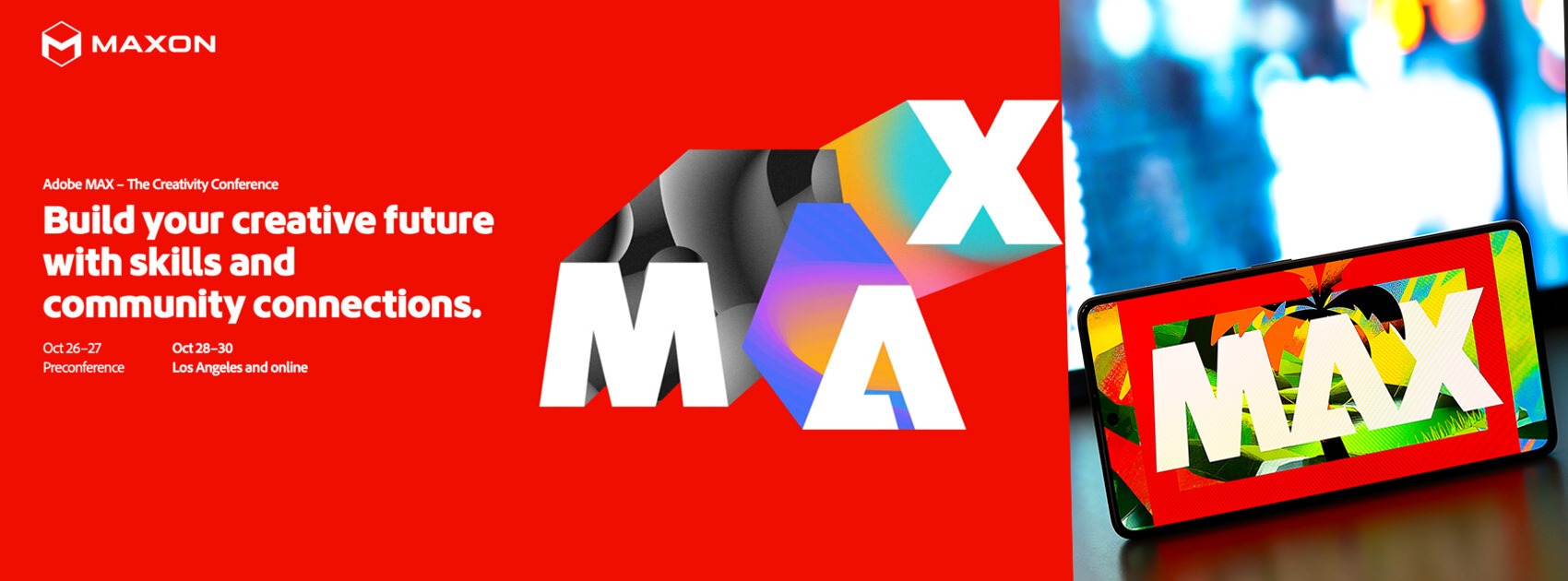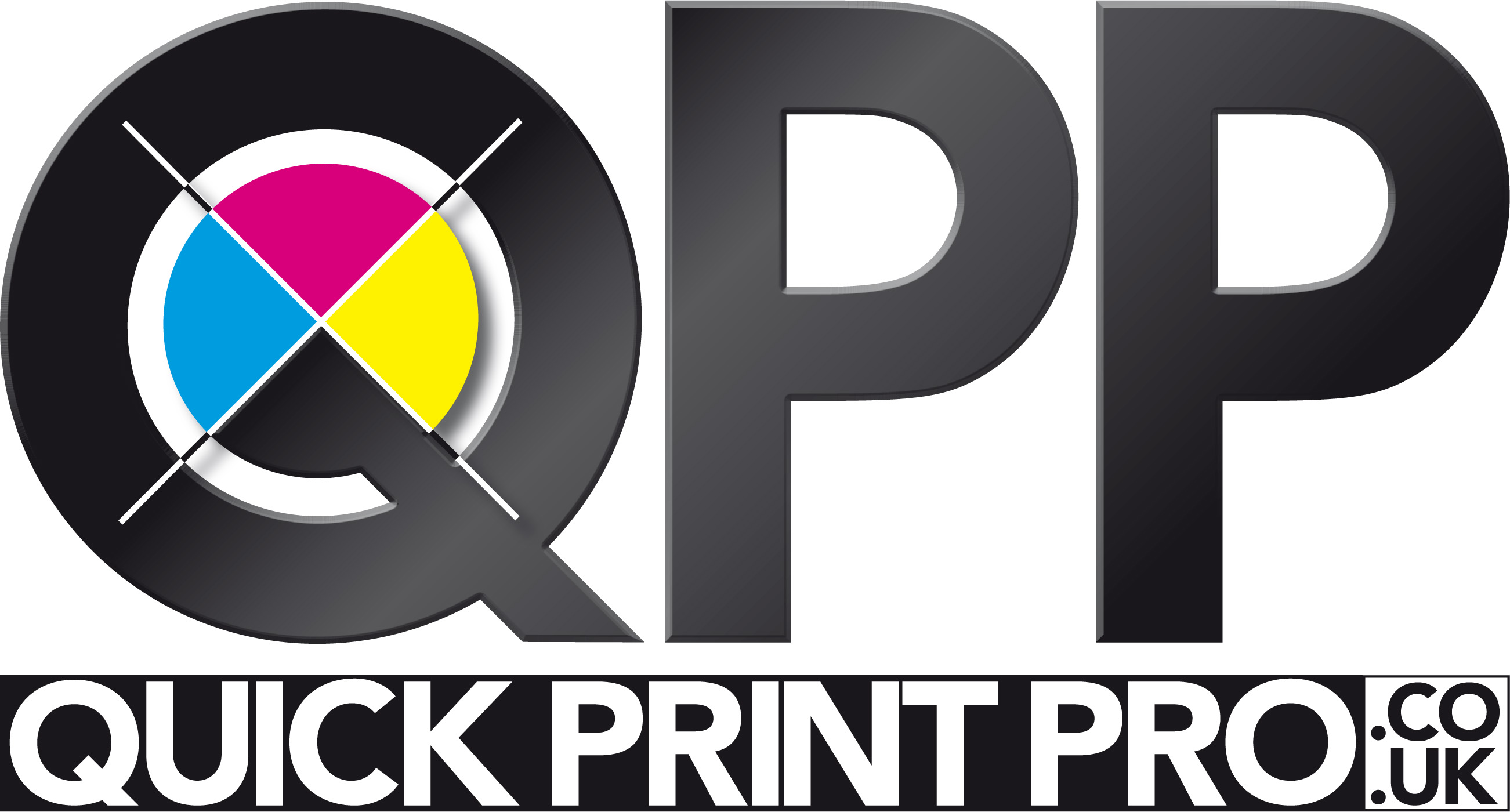The Next Generation
Martin Christie
By now you have already seen some of what Adobe has in store for you on mainstream media. The popular storm regarding Artificial Intelligence has rattled the windows in San Jose, California and caused them to reach out to a wider audience and show just who is top dog in digital imaging. For once it does actually deserve some of the excessive adjectives usually thrown at quite minor novelties; it is truly game changing. But that is for the future, dear reader, so hold your breath for Photoshop 24.6 and beyond. The features are available in the Beta version which you can download if you are on subscription plan, but I’m not even going to look at that Pandora’s box yet till I have learnt more about it so I can explain it to you. I shall simply corner myself with the update that came in the last week of May, 24.5, which is merely important.
If you are not on subscription, well you will have missed out on an awful lot that has happened to the powerful image engine that is Photoshop - as much of it under the bonnet as some of the eye-catching novelties on the surface. Pretty well all the developments involve the learning curve that is AI in that the more you use a tool for example, the more uses you can find for it, and the more Adobe learns from it to improve the next one.
Subscription was once viewed with suspicion and even downright opposition by many users when it was introduced ten years ago to replace the old standalone versions. It was seen as a tightening up of the many bootleg versions which were about as well as monitoring legitimate users. Now we can see why, as Adobe was already dabbling with early doors AI and pooling the resources of its users and the resulting feedback was essential to the project - far more then perhaps the company realised at the time.
Although a lot of people refused to join up to the scheme, of course those that did have repaid Adobe annually to make up the revenue lost, as well as assisting in the important evolution of the software. It’s an important distinction because although a customer may claim to have Photoshop - even be competent in using it or an equivalent image editing programme - it may be an older, inferior version which is now almost antique. So when you bounce back a file and ask them to add a bit of bleed or make the size and resolution changes which you know may take only seconds in the current version, you may be asking them to spend hours painstakingly reconstructing an image with outdated tools. Unless you worked in that old, very basic toolbox, you would never understand. Even if you do have the very latest version, unless you are active in the workspace daily as we are - and should be keeping aware of the updates - you may not know how to use them. Remember that next time you take a big sigh when asked how to do something which to you is no more complicated than tying shoe laces - there are those out there who wouldn’t be able to do that without the guidance of an app!
I once suggested a theory that we were entering the third generation of the digital revolution - at least as far as print was concerned. The first was the home PC, often coming as a package with a printer and even a scanner, and promoted as a game changer in home publishing. But of course learning how to use it was the challenge, the printer would run out of ink every time you printer more than half a dozen colour sheets, and you were connected to the wider world by a thing called a modem on the wall that made squeaky noises and transferred data with the speed of a tired snail, often giving up halfway through with the effort. You still had to go to the print shop to get anything done properly. Then came broadband and the laptop, so you could now run your office from a convenient coffee shop, though you probably turned the brightness and contrast up so much to read the screen, the result would unreadable to anyone else, and you still needed a degree of technical knowledge - like knowing you had to charge the battery.
The third, of course, is the mobile phone which in theory has given people the freedom from a static way of life, but in reality has made most of them a slave to it. And it is the actual lack of communication inherent in instant transmission of information that is its curse. A proper discussion is reduced to a few short words, and a detailed question is hardly read beyond the first sentence. Once upon a time there was a thing called a letter you opened and read, often several time - there was a lot to be said for pen and paper.
So the fourth generation will have instant imaging. You won’t even need to sit patiently waiting for that perfect sunset in your photographs, the computer will create it for you, as well as a dog, a flock of migrating geese, or even a spaceship and a collection of assorted aliens if you prefer. Well we shall see what this prospect brings to the print shop all too soon, but that is for another column, when we have time to study the results.
In the meantime there are lots more practical developments in the current Photoshop update, enough to be going on with anyway.
Recently Adobe has kept a lot of their new features in the box labelled Camera Raw in Filters, mostly because the standard workspace was already getting crowded. There were a number of previous tools to make selections requiring a little bit of trial and error to find the one most suited to the task. Sometimes a combination of one or two was best depending on the actual structure or texture of the image. AI has helped refine those selections to make masks that can be individually tuned to improve the quality of print output.
What we know, that most customers don’t, is that it is going to print differently from how it looks on the screen. Usually that means darker as the average phone takes an average photo without too much regard for highlights and shadows. And as most photos seem to be taken in dark rooms or bright sunlight there is never a happy medium. That would be just too easy.
The simple, more general adjustments, can still be made with the usual tools, but Camera Raw just gives you such fine adjustment or exposure, colour etc if the subject is worth the effort. Inevitably, what you can do does depend on what you have been given by the customer which is why some of the breathtaking transformations you can find in tutorials on line don’t really apply if you are dealing with something way beyond recovery surgery. You still need a few good pixels to work with however good AI is -it’s not magic, at least not yet.
One of the most remarkable improvements is removing digital noise. This is often confused with pixelation which is where the image is actually breaking up as you try and enlarge it because there aren’t enough pixels to fill in the gaps. You can see noise in an image that has plenty of pixels but not enough colour information usually as it was captured in low light. The camera or phone processor will just fill in the space with random colour which is basically electrical interference. Even good cameras struggle with noise in low light, phones obviously more so.
Camera Raw can apply an automatic noise reduction which is truly remarkable for anyone like me who has battled it with manual settings in the past. At the moment the automation only works with actual Camera Raw original photo files, but no doubt will be coming to other file formats soon. For them, the new manual settings are still an improvement.
Image adjustment in Levels and Curves has been around in Photoshop since the early days, and perhaps like me you’ve played around with both to see which worked best. They both do similar things but in a slightly different way. If you’ve struggled with adjusting colour then using Curves in Camera Raw has an additional visual aid.
When you open curves you get the simple RGB display - a straight line from bottom left to top right representing the darkest to the lightest parts of the image. The classic ‘correct’ exposure, as the name of the tool implies is not a straight line but a perfect S shape to balance the shadows and the highlights, bending the straight line to suit. That’s quite straightforward, but when it comes to colour, especially moving from RGB view to CMYK it is much more of a black art, or used to be. Now Adobe comes to your aid as you pick either of the RGB channels you get a CMYK screen in effect in the background showing how much of each channel you are adjusting in the image.
This is really useful for print as the more simple overall colour adjustments are often just too crude for the subtle changes of information required by modern digital printers and you can - and I’m sure you have- spent ages trying to get one colour just right for a particularly picky customer.
The curves are also available in the masking tools so you can use them with a selected subject, or brush or gradient.
The biggest obvious change is in full view of the Photoshop workspace.
A small, moveable box has been added which defaults to the bottom of the screen, with access to some regular tasks. The select subject function has just got better and better, and even if it doesn’t select exactly what you want you may not know you can adjust the marching ants by holding down the Shift key or the Alt (on PC or Option on MAC) and use a selection tool like the lasso to direct them. If the selection is correct you may just want to expand or contract the outlined area using Select > Modify and deciding how many pixels you want to add, remove or just feather.
The new Remove tool is another big step, a bit like putting content aware and the healing brushes all together in one movement. It’s not infallible, like most AI guided features, so it still needs you to keep an eye on it, and you may need to prune it with a few dabs on old fashioned cloning, but it will certainly speed up your day when you need it. Although it’s called a ‘Remove’ tool it can also be used to replace things, a bit like the Patch tool, as it is sampling things around it and replacing them with what seems appropriate. Definitely something you have to have a play with to see what works best. The great daily challenge is never knowing what is going to come in next so the more you know what you can do, and how long it will take, the better.
I will know more next month when I have had more than a couple of days to road test the new features, one of which is Adjustment Presets, also in that Contextual Box, as an option which adds an adjustment layer than can be tuned with all the familiar tools, it’s just that now they are all at your fingertips.
If I find anything more I will let you know next month!



.jpg)




-2025-11-19-10-50-51.jpg)





